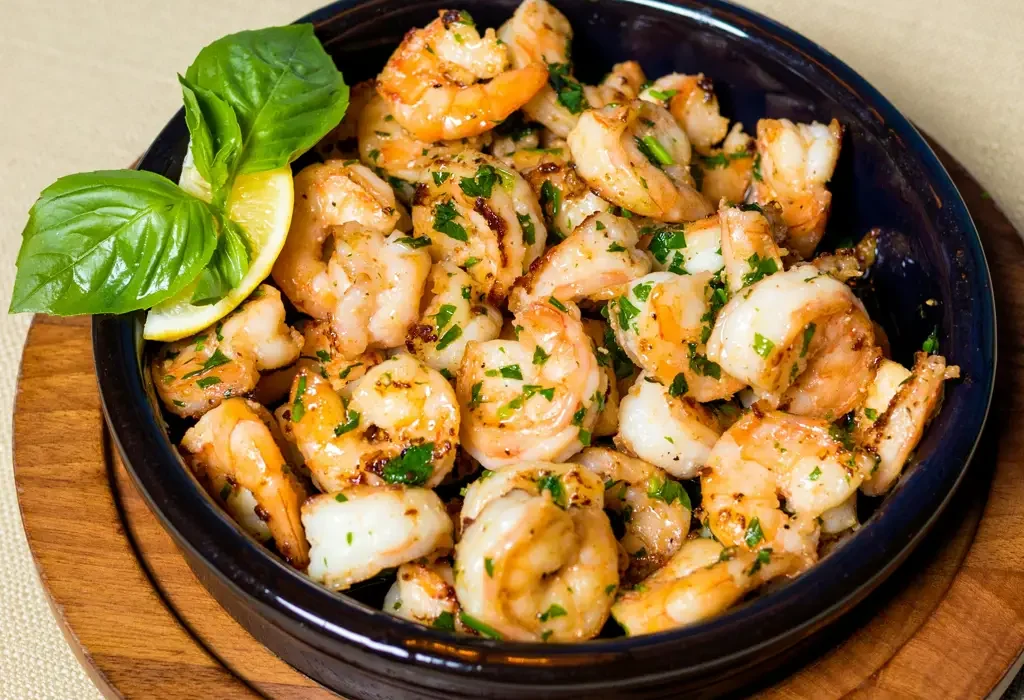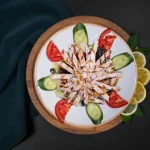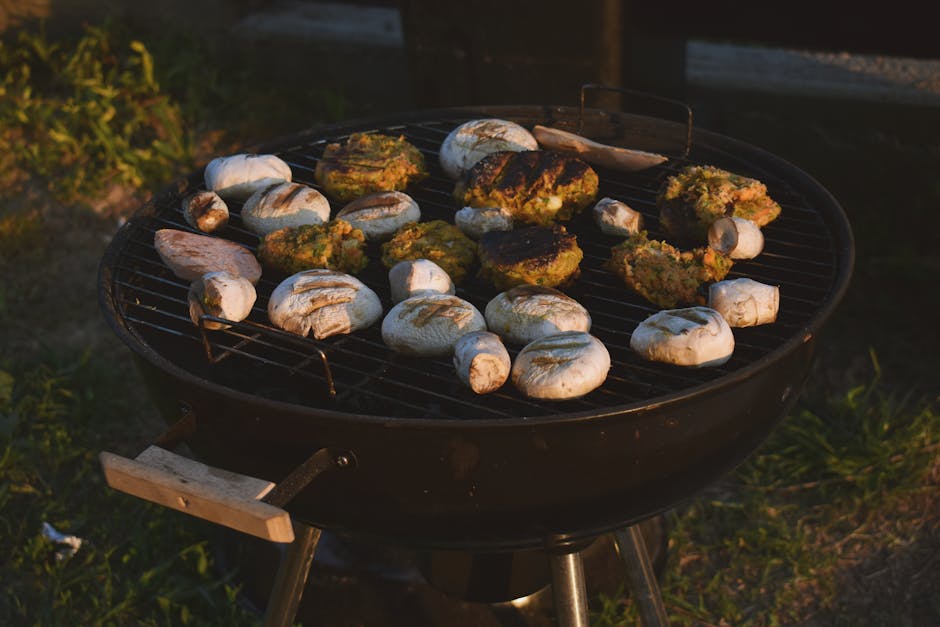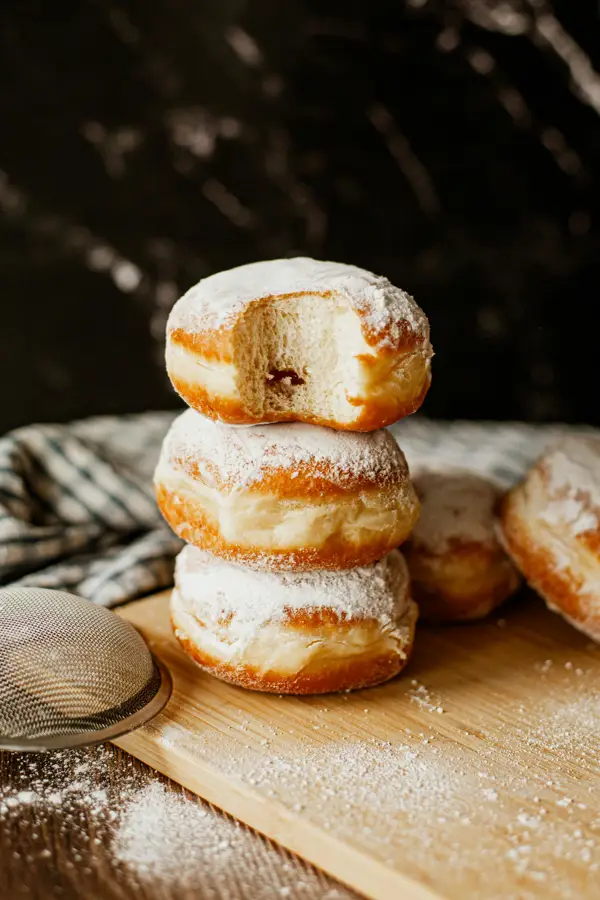Grilled shrimp and veggie skewers are a delightful culinary fusion, reflecting a global appreciation for fresh, flavorful food. While pinpointing a precise origin is difficult, the concept builds upon ancient traditions of grilling meats and vegetables on skewers. Evidence suggests that skewering food for cooking dates back millennia, with archaeological findings uncovering evidence of this technique in various cultures across the globe. Ancient civilizations, from the Greeks and Romans to those in the Middle East and Asia, utilized skewers to cook meats and vegetables over open fires, a method that ensured even cooking and imparted a smoky char. The specific combination of shrimp and vegetables on a skewer, however, is a more recent development, likely a product of increased global trade and culinary cross-pollination.
The popularity of shrimp skewers, in particular, has exploded in recent years. According to the National Oceanic and Atmospheric Administration (NOAA), shrimp is one of the most consumed seafoods worldwide, with global production exceeding 7 million metric tons annually. This high demand has driven innovation in shrimp preparation, leading to diverse culinary adaptations. The addition of vegetables to the skewers not only enhances the visual appeal but also provides nutritional balance and complements the delicate flavor of the shrimp. The incorporation of colorful vegetables like bell peppers, zucchini, and onions adds both texture and vibrant hues, making these skewers a visually stunning and healthy choice.
Culturally, grilled shrimp and veggie skewers represent a convergence of diverse culinary influences. Mediterranean cuisine, with its emphasis on fresh seafood and grilling, has significantly contributed to the popularity of these skewers. Many Mediterranean countries have variations of grilled seafood skewers, often incorporating local herbs and spices. Similarly, Asian cuisines, particularly those in Southeast Asia, frequently feature grilled seafood and vegetable combinations, highlighting the versatility and adaptability of this cooking method. The ease of preparation and the customizable nature of the ingredients also contribute to its widespread appeal, making it a popular choice for casual gatherings, barbecues, and even sophisticated dinner parties.
The beauty of this dish lies in its simplicity and adaptability. The specific vegetables and marinade can be adjusted to suit individual tastes and dietary preferences. Whether you prefer a zesty lemon-herb marinade or a spicy chili-lime dressing, the possibilities are virtually endless. This recipe will guide you through creating delicious and visually appealing grilled shrimp and veggie skewers, showcasing the best of global culinary traditions in one simple, satisfying dish.
Ingredients and Measurements
This recipe yields approximately 6 servings of delicious grilled shrimp and veggie skewers. The quantities below are a suggestion; feel free to adjust based on your guest count and personal preferences. Remember to always use fresh, high-quality ingredients for the best flavor.
For the Shrimp:
- 1 pound (450g) large shrimp, peeled and deveined. Choose shrimp that are firm and have a translucent, almost pearly appearance. Avoid any with a strong fishy odor. 16/20 count shrimp are ideal for skewering, ensuring even cooking.
- 2 tablespoons olive oil. Use a high-quality extra virgin olive oil for its superior flavor.
- 1 tablespoon lemon juice. Freshly squeezed is best!
- 1 teaspoon garlic powder.
- 1/2 teaspoon paprika.
- 1/4 teaspoon cayenne pepper (optional, for a little heat).
- 1/2 teaspoon salt.
- 1/4 teaspoon black pepper.
For the Vegetables:
- 1 red bell pepper, cut into 1-inch pieces. Choose firm, brightly colored bell peppers for optimal flavor and appearance.
- 1 green bell pepper, cut into 1-inch pieces.
- 1 yellow bell pepper, cut into 1-inch pieces. Using a variety of colors adds visual appeal to your skewers.
- 1 red onion, cut into 1-inch pieces. Soak the cut onion in cold water for 10-15 minutes before using to reduce its sharpness.
- 1 zucchini, cut into 1-inch pieces.
- 1 yellow squash, cut into 1-inch pieces. Ensure all vegetables are cut into roughly the same size to ensure even cooking.
- 1 cup cherry tomatoes. These add a burst of sweetness and juiciness to the skewers.
For the Marinade (Optional):
While the recipe doesn’t require a separate marinade, you can enhance the flavor by adding the shrimp to a mixture of 1/4 cup olive oil, 2 tablespoons lemon juice, 1 clove minced garlic, and 1/4 teaspoon salt and pepper. Marinate for at least 30 minutes, or up to 2 hours in the refrigerator. This step is entirely optional but highly recommended for extra flavor.
Important Note: The quantities of vegetables can be adjusted to your liking. If you prefer more of a certain vegetable, feel free to add more. Similarly, if you dislike a particular vegetable, you can omit it entirely. The key is to have a good balance of flavors and textures. Also, remember to soak your wooden skewers in water for at least 30 minutes before using to prevent them from burning on the grill.
Equipment List
Creating delicious grilled shrimp and veggie skewers requires the right tools to ensure efficient preparation and even cooking. This list details the essential equipment, with recommendations for optimal results and alternatives where applicable.
Skewers: You’ll need approximately 12-15 metal skewers, measuring 12 inches in length. Avoid using wooden skewers, as these require pre-soaking to prevent burning and can sometimes impart a slightly woody flavor. Metal skewers provide even heat distribution and are reusable, making them a more sustainable choice. If you prefer a more rustic look, consider bamboo skewers, but ensure you soak them in water for at least 30 minutes prior to use to prevent burning. The 12-inch length allows for ample space to accommodate both shrimp and vegetables without overcrowding.
Grill: A gas grill, charcoal grill, or even a grill pan on your stovetop will work effectively. For the best results, a gas grill provides consistent temperature control, making it easier to achieve perfectly cooked shrimp and vegetables. A charcoal grill offers a smoky flavor, but requires more attention to temperature management. A grill pan offers convenience for indoor grilling, but may not achieve the same char marks as an outdoor grill. Regardless of your grill type, ensure it’s clean and preheated to medium-high heat (approximately 375-400°F) before you begin grilling.
Prep Tools: A sharp chef’s knife (approximately 8-inch blade) is crucial for precise cutting of the vegetables. A cutting board made of durable material like wood or plastic is essential. A pair of kitchen shears will be helpful for trimming the shrimp and herbs. Measuring cups and spoons will ensure accurate ingredient measurements for the marinade. You’ll also need a large bowl for marinating the shrimp and vegetables. Consider using a bowl that is large enough to allow for easy mixing and turning of the ingredients.
Serving Utensils: You’ll need tongs to easily maneuver the skewers on the grill and to serve. A spatula can be helpful for flipping the skewers, especially if using a grill pan. A serving platter or individual plates will be needed to present your finished skewers. Consider using heat-resistant gloves to protect your hands from the heat of the grill, especially when handling the hot skewers.
Optional Equipment: A meat thermometer can ensure the shrimp are cooked through to a safe internal temperature of 145°F. A basting brush can be used to apply additional marinade or oil to the skewers during grilling, enhancing flavor and preventing sticking. Aluminum foil can be used to create a grilling packet for more delicate vegetables, ensuring they cook evenly without burning. These optional items enhance the cooking process but are not strictly necessary.
Cleaning Supplies: Have a grill brush readily available to clean the grill grates before and after grilling. Dish soap and a sponge or dishcloth will be needed for cleaning the other equipment. Proper cleaning of your equipment after use is crucial for maintaining its longevity and for food safety.
Marinade Preparation
The success of your grilled shrimp and veggie skewers hinges significantly on a flavorful and well-balanced marinade. This section details the preparation of a zesty lemon-herb marinade that perfectly complements both the shrimp and vegetables. We’ll be making enough marinade for approximately 1 pound of shrimp and 1 pound of vegetables.
Ingredients:
- 1/4 cup extra virgin olive oil: Choose a high-quality olive oil for its superior flavor and healthy fats.
- 1/4 cup fresh lemon juice: Freshly squeezed lemon juice offers a brighter, more vibrant flavor than bottled juice.
- 2 cloves garlic, minced: Mincing the garlic ensures even distribution of flavor throughout the marinade.
- 1 tablespoon Dijon mustard: Dijon mustard adds a subtle tanginess and helps to emulsify the marinade.
- 1 tablespoon chopped fresh oregano: Fresh oregano provides a robust, earthy flavor. Dried oregano can be substituted, using about 1 teaspoon.
- 1 tablespoon chopped fresh parsley: Parsley adds freshness and a touch of vibrancy to the marinade.
- 1 teaspoon salt: Adjust to your taste preference. Sea salt is recommended for its superior flavor.
- 1/2 teaspoon black pepper: Freshly ground black pepper is always best.
- 1/4 teaspoon red pepper flakes (optional): Add a pinch for a hint of heat, adjusting to your spice preference.
Instructions:
In a medium-sized bowl, whisk together the olive oil, lemon juice, minced garlic, Dijon mustard, oregano, parsley, salt, pepper, and red pepper flakes (if using). Ensure all ingredients are thoroughly combined to create a homogenous mixture. A whisk is ideal for this task, as it helps to emulsify the oil and lemon juice, resulting in a smoother, more evenly distributed marinade.
Important Considerations:
Taste and Adjust: Before marinating your shrimp and vegetables, take a small spoonful of the marinade and taste it. Adjust the seasoning as needed, adding more salt, pepper, lemon juice, or herbs to achieve your desired flavor profile. Remember, the marinade should be flavorful but not overpowering.
Marinating Time: For optimal flavor, marinate your shrimp and vegetables for at least 30 minutes. For a more intensely flavored result, marinate for up to 2 hours. However, avoid marinating for longer than 2 hours, especially the shrimp, to prevent over-tenderizing.
Storage: If you’re preparing the marinade ahead of time, store it in an airtight container in the refrigerator. Remember to bring it to room temperature before using it to ensure even marinating.
Note: This marinade can also be used for other grilled seafood or vegetables. Feel free to experiment and adjust the herbs and spices to create your own signature flavor combination!
Shrimp Preparation
Preparing the shrimp correctly is crucial for achieving perfectly grilled skewers. Start with 1 pound of large shrimp (21-25 count per pound), peeled and deveined. You can purchase pre-peeled and deveined shrimp to save time, but be sure to check for any remaining shells or veins.
If you’re starting with raw shrimp that need to be peeled and deveined, begin by rinsing them under cold running water. Then, using a sharp paring knife or shrimp peeler, carefully make a shallow cut along the back of each shrimp, exposing the dark vein. Gently remove the vein with the tip of the knife or a small toothpick. Be careful not to cut too deeply, or you’ll risk breaking the shrimp.
Once peeled and deveined, pat the shrimp dry with paper towels. This is a vital step! Excess moisture will prevent proper browning and grilling, leading to mushy, rather than succulent, shrimp. Thoroughly drying the shrimp also helps the marinade adhere better.
Now it’s time to marinate the shrimp. For this recipe, we recommend a simple but flavorful marinade. In a medium bowl, whisk together 1/4 cup olive oil, 2 tablespoons lemon juice, 1 tablespoon chopped fresh cilantro, 1 teaspoon garlic powder, 1/2 teaspoon paprika, 1/4 teaspoon salt, and 1/4 teaspoon black pepper. Add the shrimp to the bowl and gently toss to coat evenly. Ensure all the shrimp are thoroughly coated. Cover the bowl and refrigerate for at least 30 minutes, or up to 2 hours. Marinating for longer allows the shrimp to absorb the flavors more fully, resulting in tastier skewers.
After marinating, remove the shrimp from the refrigerator and let them sit at room temperature for about 10-15 minutes before threading them onto the skewers. This helps to ensure even cooking. Avoid overcrowding the skewers; leave a little space between each shrimp to allow for even heat distribution and prevent sticking.
When threading the shrimp onto skewers, consider the size and shape of your grill. If using wooden skewers, remember to soak them in water for at least 30 minutes before grilling to prevent burning. Metal skewers are a good alternative and don’t require soaking. Thread the shrimp onto the skewers in a visually appealing manner, alternating with your chosen vegetables for a colorful and balanced presentation.
Important Note: Overcooked shrimp will become rubbery and tough. Therefore, it’s crucial to monitor them closely while grilling and avoid overcooking. Shrimp cook quickly, generally taking only a few minutes per side.
Vegetable Preparation
Selecting the right vegetables is crucial for perfectly grilled shrimp and veggie skewers. Aim for vegetables that hold their shape well during grilling and offer a pleasing contrast in texture and flavor to the shrimp. We recommend using a combination of firm, colorful options.
For this recipe, we’ll be using 1 red bell pepper, 1 yellow bell pepper, 1 zucchini, 1 red onion, and 1 cup of cherry tomatoes. These quantities are enough for approximately 4 skewers. Feel free to adjust based on your needs and preferred vegetable combinations. Other excellent choices include firm mushrooms (cremini or portobello), asparagus, and even chunks of pineapple for a touch of sweetness.
Preparation is key to preventing uneven grilling and ensuring your vegetables cook through properly. Begin by thoroughly washing all vegetables under cold running water. Remove any blemishes or damaged areas.
Next, we’ll prepare each vegetable individually. For the bell peppers, cut them in half lengthwise, remove the seeds and membranes, and then slice each half into roughly 1-inch wide strips. This size ensures even cooking and prevents the peppers from burning before the inside is tender.
The zucchini should be cut into similarly sized pieces as the bell peppers – about 1-inch thick chunks. You can leave the skin on, as it adds texture and nutrients. If you prefer a milder zucchini flavor, you can peel it before cutting.
The red onion, known for its sharp flavor, can be quite overpowering if left in large chunks. Therefore, we’ll thinly slice it into ¼-inch thick rounds. This helps to both soften the onion’s intensity and ensures it cooks evenly alongside the other vegetables.
Finally, the cherry tomatoes require minimal preparation. They are small enough to grill whole, adding pops of juicy sweetness to the skewers. No need to cut these; simply wash and leave as is.
Once all the vegetables are prepped, it’s important to consider their cooking times. To ensure everything cooks evenly, try to make the pieces relatively uniform in size. This prevents some vegetables from overcooking while others remain raw. Consider using a vegetable peeler for uniform cutting if you’re finding it challenging to cut by hand.
After prepping, you can optionally toss the vegetables with a light coating of olive oil (about 2 tablespoons) and season with salt and pepper to taste. This helps them to retain moisture during grilling and adds flavor. Avoid over-seasoning at this stage; you can always add more seasoning later if needed. Herbs like rosemary, thyme, or oregano can be added for extra aromatic complexity.
With your vegetables prepared and ready to go, you’re one step closer to delicious grilled shrimp and veggie skewers! Remember to keep your prepared vegetables refrigerated until you are ready to assemble the skewers.
Skewer Assembly: Building Your Perfect Skewers
Assembling your shrimp and veggie skewers is an art form that directly impacts both the cooking process and the presentation of your final dish. Careful consideration of skewer type, food arrangement, and overall balance will result in perfectly cooked, visually appealing skewers.
Choosing the Right Skewers: For grilling shrimp and vegetables, we recommend using metal skewers, specifically stainless steel or aluminum. These conduct heat efficiently, ensuring even cooking of your ingredients. Avoid wooden skewers, as they require pre-soaking to prevent burning and can sometimes impart a slightly woody flavor. Aim for skewers that are approximately 12 inches long. If using flat skewers, ensure they are wide enough to comfortably hold the ingredients without overcrowding.
Preparing Your Ingredients: Before you begin assembling, ensure all your shrimp and vegetables are thoroughly cleaned and prepped. For the shrimp, peel and devein them, leaving the tails on for easier handling and a more elegant presentation. Cut your vegetables into bite-sized pieces, roughly 1-1.5 inches in size. This ensures even cooking and prevents some pieces from burning before others are cooked through. Consider the cooking time of each vegetable; harder vegetables like bell peppers and zucchini will generally take longer to cook than cherry tomatoes or mushrooms.
The Art of Arrangement: The arrangement of your ingredients on the skewer is crucial for both aesthetics and even cooking. Avoid overcrowding the skewer; leave some space between the pieces to allow for proper heat circulation. A good rule of thumb is to leave about ⅛ inch of space between each item. We recommend alternating shrimp and vegetables for a visually pleasing and balanced flavor profile. A suggested pattern is: shrimp, bell pepper, zucchini, cherry tomato, shrimp, onion, mushroom, shrimp, etc. This ensures each bite contains a delightful mix of flavors and textures.
Quantity and Balance: A typical skewer should contain approximately 4-5 shrimp and an equal volume of vegetables. The exact quantity will depend on the size of your shrimp and vegetables. Aim for a balanced skewer in terms of weight and size. This prevents certain parts of the skewer from cooking faster than others. Too many large vegetables in one area can lead to uneven cooking and potential burning.
Professional Tip: To prevent the shrimp and vegetables from spinning on the skewer during grilling, consider slightly overlapping the pieces. This will provide a more secure hold. However, avoid overlapping excessively as this will hinder even cooking. Finally, once your skewers are assembled, lightly oil them with olive oil or your preferred grilling oil. This helps to prevent sticking and promotes beautiful grill marks. Remember to have fun and experiment with different vegetable combinations to create your unique and delicious grilled shrimp and veggie skewers!
Important Note: Always handle raw shrimp and vegetables with care and wash your hands thoroughly after handling them.
Recommendations
To elevate your grilled shrimp and veggie skewers experience, consider these recommendations for preparation, serving, and storage. Proper preparation is key to achieving perfectly cooked shrimp and tender vegetables. Marinating the shrimp and vegetables for at least 30 minutes, or preferably up to 4 hours, prior to grilling will infuse them with flavor and keep them moist. For even cooking, ensure the shrimp and vegetables are cut into similarly sized pieces. This prevents some items from burning before others are cooked through.
Grilling techniques are crucial for success. Preheat your grill to medium-high heat before placing the skewers on. Avoid overcrowding the grill; leave space between skewers for even heat distribution. Cook the skewers, turning occasionally, until the shrimp are pink and opaque, and the vegetables are tender-crisp. Use tongs to gently turn the skewers to prevent sticking and breakage. A meat thermometer can ensure the shrimp reach an internal temperature of 145°F (63°C) for food safety.
Serving suggestions offer many delicious options. These skewers are incredibly versatile. Serve them as an appetizer, a light lunch, or a part of a larger meal. They pair beautifully with a variety of side dishes, including rice, quinoa, couscous, or a fresh salad. A vibrant summer salad with mixed greens, cherry tomatoes, cucumbers, and a light vinaigrette would complement the skewers perfectly. Consider adding a squeeze of fresh lime juice just before serving to enhance the flavors.
Storage is important for maximizing freshness. Leftover grilled shrimp and veggie skewers can be stored in an airtight container in the refrigerator for up to 3 days. For best results, allow the skewers to cool completely before refrigerating to prevent condensation and bacterial growth. When reheating, avoid overcooking; microwave or gently reheat in a pan until warmed through.
Complementary dishes add a depth of flavor and texture to your meal. A creamy cilantro-lime dipping sauce or a spicy mango salsa would beautifully complement the grilled shrimp and vegetables. A simple side of grilled corn on the cob or a refreshing watermelon salad would also be excellent additions. Experiment with different herbs and spices to create your own unique flavor combinations.
Nutritional Information (per serving, approximate values will vary based on ingredients and portion size): Calories: 250-350, Protein: 20-25g, Fat: 10-15g (including healthy fats from the shrimp and olive oil), Carbohydrates: 15-20g, Fiber: 3-5g. These values are estimates and can fluctuate depending on the specific vegetables and shrimp used, as well as the size of the serving. For a more accurate nutritional breakdown, use a nutrition calculator with the specific ingredients and quantities used in your recipe.
Remember to adjust cooking times based on the size of your skewers and the heat of your grill. Enjoy your delicious and healthy grilled shrimp and veggie skewers!





